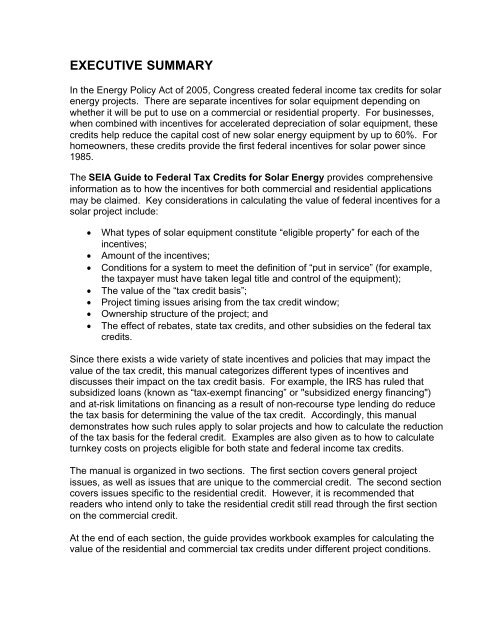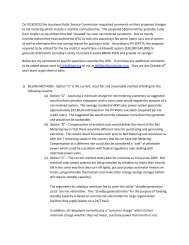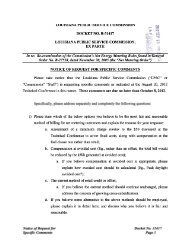SEIA Guide to Federal Tax Incentives for Solar Energy - Solar Power ...
SEIA Guide to Federal Tax Incentives for Solar Energy - Solar Power ...
SEIA Guide to Federal Tax Incentives for Solar Energy - Solar Power ...
Create successful ePaper yourself
Turn your PDF publications into a flip-book with our unique Google optimized e-Paper software.
EXECUTIVE SUMMARYIn the <strong>Energy</strong> Policy Act of 2005, Congress created federal income tax credits <strong>for</strong> solarenergy projects. There are separate incentives <strong>for</strong> solar equipment depending onwhether it will be put <strong>to</strong> use on a commercial or residential property. For businesses,when combined with incentives <strong>for</strong> accelerated depreciation of solar equipment, thesecredits help reduce the capital cost of new solar energy equipment by up <strong>to</strong> 60%. Forhomeowners, these credits provide the first federal incentives <strong>for</strong> solar power since1985.The <strong>SEIA</strong> <strong>Guide</strong> <strong>to</strong> <strong>Federal</strong> <strong>Tax</strong> Credits <strong>for</strong> <strong>Solar</strong> <strong>Energy</strong> provides comprehensivein<strong>for</strong>mation as <strong>to</strong> how the incentives <strong>for</strong> both commercial and residential applicationsmay be claimed. Key considerations in calculating the value of federal incentives <strong>for</strong> asolar project include:· What types of solar equipment constitute “eligible property” <strong>for</strong> each of theincentives;· Amount of the incentives;· Conditions <strong>for</strong> a system <strong>to</strong> meet the definition of “put in service” (<strong>for</strong> example,the taxpayer must have taken legal title and control of the equipment);· The value of the “tax credit basis”;· Project timing issues arising from the tax credit window;· Ownership structure of the project; and· The effect of rebates, state tax credits, and other subsidies on the federal taxcredits.Since there exists a wide variety of state incentives and policies that may impact thevalue of the tax credit, this manual categorizes different types of incentives anddiscusses their impact on the tax credit basis. For example, the IRS has ruled thatsubsidized loans (known as “tax-exempt financing” or "subsidized energy financing")and at-risk limitations on financing as a result of non-recourse type lending do reducethe tax basis <strong>for</strong> determining the value of the tax credit. Accordingly, this manualdemonstrates how such rules apply <strong>to</strong> solar projects and how <strong>to</strong> calculate the reductionof the tax basis <strong>for</strong> the federal credit. Examples are also given as <strong>to</strong> how <strong>to</strong> calculateturnkey costs on projects eligible <strong>for</strong> both state and federal income tax credits.The manual is organized in two sections. The first section covers general projectissues, as well as issues that are unique <strong>to</strong> the commercial credit. The second sectioncovers issues specific <strong>to</strong> the residential credit. However, it is recommended thatreaders who intend only <strong>to</strong> take the residential credit still read through the first sectionon the commercial credit.At the end of each section, the guide provides workbook examples <strong>for</strong> calculating thevalue of the residential and commercial tax credits under different project conditions.






